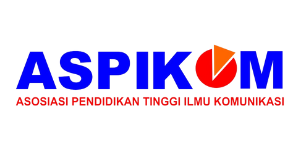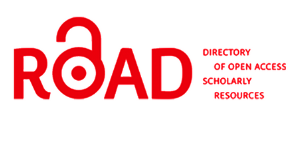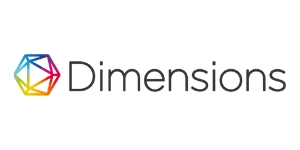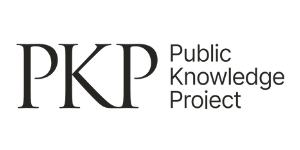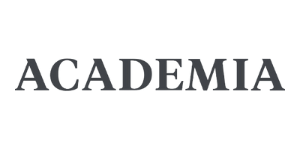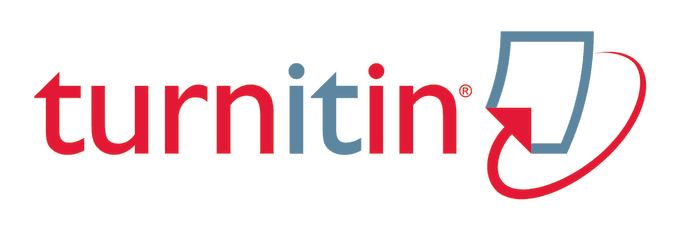A “Notification” on The Use of Social Media as A Means of Community Resilience in Crisis Management
DOI:
https://doi.org/10.37535/105003220241Keywords:
Community Resilience, Social Media, Crisis Communication, Crisis Mangement, public relationsAbstract
This comparative study explores the role of social media in building community resilience during the Covid-19 pandemic, focusing on citizens' communication habits. Community resilience, defined as the ability to withstand, adapt, and recover from adverse situations, is crucial, especially in the face of crises like pandemics. Effective strategic communication with the target audience is vital for creating and maintaining community resilience. Strategic communication plays a key role in helping communities prepare, respond, and recover by providing clear information, encouraging cooperation, and fostering adaptable behaviors. In the digital age, where a significant portion of the population lives online, social media platforms serve as essential tools for collecting information, disseminating crisis-related news, mobilizing the audience, and contributing to crisis management efforts. This study, conducted between May 5-10, 2020, with 800 participants from Turkey and 800 from the USA, reveals that individuals in both countries spend a considerable amount of time online, utilizing at least 3-4 social media applications. Instagram, YouTube, Facebook, and Twitter are identified as popular platforms. Most importantly, both Turkey and the United States demonstrate resilient societies, and there is a significant correlation between community resilience and the use of social media for obtaining information during the Covid-19 crisis. This emphasizes the critical role of crisis communication as a key success factor in building community resilience.
References
AO, S. H., & Mak, A. K. Y. (2021). Regenerative crisis, social media publics and Internet trolling: A cultural discourse approach. Public Relations Review, 47(4). https://doi.org/10.1016/j.pubrev.2021.102072.
Austin, L.; Brooke F. & Jin, Yan (2012). How Audiences Seek Out Crisis Information: Exploring the Social-Mediated Crisis Communication Model, Journal of Applied Communication Research, 40(2), 188-207. https://doi.org/10.1080/00909882.2012.654498.
Beatson, A. (2017). Community resilience in the age of social media: A Literature Review. Lower Hutt (NZ): GNS Science. 18 p. (GNS Science report; 2017/43)
Berkes, F., & Ross, H. (2013). Community Resilience: Toward an Integrated Approach, Society & Natural Resources, 26(1), 5-20. https://doi.org/10.1080/08941920.2012.736605.
Buzzanell, P. (2010). Resilience: Talking, Resisting, and Imagining New Normalcies Into Being, Journal of Communication, 60(1), 1-14. https://doi.org/10.1111/j.1460-2466.2009.01469.x.
Canöz, K., & Özdoğan, A. G. (2015). Kriz Yönetiminde Dönüşümcü Liderin Rolü, Gümüşhane Üniversitesi, İletişim Fakültesi Elektronik Dergisi, 3(1), 36-61. https://doi.org/10.19145/guifd.15810.
Chandra, A.; Joie D. A.; Stefanie H.; Lori Uscher-Pines, Malcolm V. ; Douglas Y.; Jeffrey G., & Lisa S. M. (2011). Building Community Resilience to Disasters: A Way Forward to Enhance National Health Security. Santa Monica, CA: RAND Corporation. https://www.rand.org/pubs/technical_reports/TR915.html.
Chandra, A.; Malcolm, W.; Plough, A.; Stayton, A. et al (2013). Getting Actionable About Community Resilience: The Los Angeles County Community Disaster Resilience Project, American Journal of Public Health, 103(7), 1181-1189. https://doi.org/10.2105%2FAJPH.2013.301270.
Coombs, W. T. (1999). Ongoing crisis communication: Planning, managing and responding, Sage Publications, Londra.
Coombs W. T. (2008). The Future of Crisis Communication From An International Perspective, Krisenmanagement in der Mediengesellschaft (Editörler: Nolting T., Thießen A.) VS Verlag für Sozialwissenschaften, Wiesbaden.
Coombs, W. T. & Holladay, J. S. (2008). Comparing Apology To Equivalent Crisis Response Strategies: Clarifying Apology’s Role And Value In Crisis Communication, Public Relations Review, 34(3), 252–257. https://doi.org/10.1016/j.pubrev.2008.04.001.
Currie D. (2009). Expert round table on social media and risk communication during times of crisis: Strategic challenges and opportunities. Special Report. McLean, VA: Booz Allen & Hamilton.
Çerçi, Ö.; Canöz, N., & Canöz, K. (2020). Covid-19 Krizi Döneminde Bilgilenme Aracı Olarak Sosyal Medya Kullanımı, Selçuk Ün. Sos. Bil. Ens. Der. 2020; (44), 184-198.
Dufty, N. (2012). Using Social Media To Build Community Disaster Resilience, The Australian Journal of Emergency Management, 27(1), 40-45.
Freberg, K., Palenchar, M. J. & Veil, S. V. (2013). Managing and sharing H1N1 crisis information using social media bookmarking services, Public Relations Review, 39(3), 178– 184. https://doi.org/10.1016/j.pubrev.2013.02.007.
Helinsha, M., & Margawati, M. (2022). The Influence of Social Media Instagram Toward Purchase Decision Making Process in Organicsupplyco. Journal of Communication and Public Relations, 1(2), 31–53. https://doi.org/10.37535/105001220224.
Herrman, H.; Stewart, D.; Diaz-Granados,N.; Jackson, B. & Yuen, T. (2011). What Is Resilience?, La Revue canadienne de psychiatrie, 56(5), 258-265.
Hou, Y.; Tan, Yi.; & Lim, W. (2018). Adequacy of public health communications on H7N9 and MERS in Singapore: insights from a community based cross-sectional study, BMC Public Health, 18(436), 1-11. https://doi.org/10.1186/s12889-018-5340-x.
Houston, B. (2018). Community resilience and communication: dynamic interconnections between and among individuals, families, and organizations, Journal of Applied Communication Research, 46(1), 19-22. https://doi.org/10.1080/00909882.2018.1426704.
Houston, B.; Spialek, M.; Cox, J.; Greenwood, M. & First, J. (2015). The centrality of communication and media in fostering community resilience: A framework for assessment and intervention. American Behavioral Scientist, 59(2), 270–283. https://doi.org/10.1177/0002764214548563.
Jordan, E. & Javernick-Will, A. (2012). Measuring Community Resilience and Recovery: A Content Analysis of Indicators, Construction Research Congress 2012 © ASCE 2012, 2190-2199.
Kamiloğlu,F. & Yurttaş,Ö. (2014). Sosyal Medyanın Bilgi Edinme ve Kişisel Gelişim Sürecine Katkısı ve Lise Öğrencileri Üzerine Bir Alan Çalışması, İleti-ş-im, 21, 129-150. https://doi.org/10.16878/gsuilet.96678.
Kaplan, A. & Haenlein, M. (2010). Users of the world, unite! The challenges and opportunities of Social Media, Business Horizons, 53, 59-68. https://doi.org/10.1016/j.bushor.2009.09.003.
Kar, B. & Cochran, D. (2019). Risk Communication and Community Resilience, New York: Routledge.
Katsikopoulos, P. (2021). Individual and community resilience in natural disaster risks and pandemics (covid‑19): risk and crisis communication, Mind &Society, 20, 113–118. https://doi.org/10.1007/s11299-020-00254-0.
Kimhi, S.; Marciano, H.; Eshel, Y. & Adini, B. (2020). Resilience and demographic characteristics predicting distress during the COVID-19 crisis, Social Science & Medicine 265,113389, 1-6. https://doi.org/10.1016%2Fj.socscimed.2020.113389.
Kimhi, S.; Eshel, Y.; Lahad, M. & Leykin, D. (2018). National Resilience: A New Self-Report Assessment Scale, Community Mental Health Journal, 55(4), 721–731. https://doi.org/10.1007/s10597-018-0362-5.
Longstaff, P. & Sung-un, Y.(2008). Communication management and trust: their role in building resilience to “surprises” such as natural disasters, pandemic flu, and terrorism, Ecology and Society 13(1): 3. http://dx.doi.org/10.5751/ES-02232-130103.
Ngai, C. B. & Jin, Y. (2016). The Effectiveness of Crisis Communication Strategies on Sina Weibo in Relation to Chinese Publics’ Acceptance of These Strategies, Journal of Business and Technical Communication, 30(4), 451-494. http://dx.doi.org/10.1177/1050651916651907.
Ophir Y. (2018) Coverage of epidemics in American newspapers through the lens of the crisis and emergency risk communication framework. Health Secure; 16:147–57. https://doi.org/10.1089/hs.2017.0106.
Patel, S.; Rogers, B.; Amlot, R. & Rubin, J. (2017). What Do We Mean by ‘Community Resilience’? A Systematic Literature Review of How It Is Defined in the Literature, PLOS Currents Disasters, Feb.1, Ed.1.
Pinheiro, M. & Matos, A. (2012). Exploring the construct validity of the two versions of the Resilience Scale in a Portuguese adolescent sample, The European Journal of Social & Behavioural Sciences, 2(5), 178-189. http://dx.doi.org/10.15405/FutureAcademy/ejsbs(2301-2218).2012.2.5.
Porfiriev, B. (2007). Disaster and Crisis Management in Transitional Societies: Commonalities and Peculiarities, Handbook of Disaster Research (Eds: Rodríguez,H; Quarantelli ,Eve Dynes , R.), 368-387.
Prentice, S. & Huffman, E. (2008). Social Media’s New Role in Emergency Management Emergency Management and Robotics for Hazardous Environments, Emergency Management and Robotics for Hazardous Environments, New Mexico.
Rice, R. M. & Jahn, Jody L. S. (2020). Disaster resilience as communication practice: remembering and forgetting lessons from past disasters through practices that prepare for the next one, Journal of Applied Communication Research, 48(1), 136-155. http://dx.doi.org/10.1080/00909882.2019.1704830.
Saliou, P. (1994). Crisis communication in the event of a flu pandemic, European Journal of Epidemiology, 10, 515-517. https://doi.org/10.1007/BF01719693.
Schultz, F.; Utz, S. & Göritz, A. (2011). Is the medium the message? Perceptions of and reactions to crisis communication via twitter, blogs and traditional media, Public Relations Review, 37(1), 20–27. https://doi.org/10.1016/j.pubrev.2010.12.001.
Skuse, A., & Brimacombe, T. (2014). Social networking, social media, and complex emergencies: Issues paper. Queanbeyan (AT): Australian Civil-Military Centre.
Smith, K.; Emerson, D., & Schuldt, M. (2018). A demographic and psychometric assessment of the Connor-Davidson resilience scale 10 (CD-RISC 10) with a US public accounting sample, Journal of Accounting & Organizational Change, 14(4) , 513-534. http://dx.doi.org/10.1108/JAOC-12-2016-0085.
South, J.; Stansfield J.; Amlôt R., & Weston D. (2020). Sustaining and strengthening community resilience throughout the COVID-19 pandemic and beyond. Perspectives in Public Health, 140(6), 305-308. https://doi.org/10.1177/1757913920949582.
Substance Abuse and Mental Health Services Administration: Communicating in a Crisis: Risk Communication Guidelines for Public Officials. SAMHSA Publication No. PEP19-01-01-005. Rockville, MD, Substance Abuse and Mental Health Services Administration, 2019.
Sutton, J.; Palen L., & Shklovski, I.(2008). Backchannels on the Front Lines: Emergent Uses of Social Media in the 2007 Southern California Wildfires, Proceedings of the 5th International ISCRAM Conference – Washington, DC, USA.
Taylor, M.; Wells, G.; Howell, G., & Raphael, B. (2012). The role of social media as psychological first aid as a support to community resilience building. A Facebook study from 'Cyclone Yasi Update', Australian Journal of Emergency Management, 27(1), 20-26.
Tirkkonen, P. & Luoma-aho, V. (2011). Online authority communication during an epidemic: A Finnish example, Public Relations Review, 37(2), 172–174. https://doi.org/10.1016/j.pubrev.2011.01.004.
Tyas, A., & Hutagaol, O. (2021). The Effect of Social Media Content on Buying Decision ofHijUp.com. Journal of Communication and Public Relations, 1(1), 32–40. https://doi.org/10.37535/105001120214.
Turnbull, M.; Sterrett, C., & Hilliboe, A. (2013). Toward Resilience: A guide to disaster risk reduction and climate change adaptation, Warwickshire; UK: Practical Action Publishing Ltd.
Twigg, J. (2007) Characteristics of a disaster-resilient community: A guidance note. London, UK: DFID Disaster Risk Reduction NGO Interagency Coordination Group.
Ulmer, R.; Seeger, M., & Sellnow, T. (2007). Post-crisis communication and renewal: Expanding the parameters of post-crisis discourse, Public Relations Review, 33(2), 130–134. https://doi.org/10.1016/j.pubrev.2006.11.015.
Van der Meer, T., & Verhoeven, P. (2013). Public Framing Organizational Crisis Situations: Social Media Versus News Media, Public Relations Review. 39(3). 229–231. https://doi.org/10.1016/j.pubrev.2012.12.001.
Vos, M., & Sullivan, H. (2014). Community Resilience in Crises: Technology and Social Media Enablers, Human Technology, 10(2), 61-67. http://dx.doi.org/10.17011/ht/urn.201411263368.
Wang, Y. C., Shen, J. K., Xiang, W. N., & Wang, J. Q. (2018). Identifying characteristics of resilient urban communities through a case study method. Journal of Urban Management, 7(3), 141-151. https://doi.org/10.1016/j.jum.2018.11.004.
White, C. (2012) Social Media, Crisis Communication, and Emergency Management: Leveraging Web 2.0 Technology, CRC Press, Boca Raton.
Zhang L.; Zhao J.; Liu J., & Chen K. (2020). Community Disaster Resilience in the COVID-19 Outbreak: Insights from Shanghai’s Experience in China, Risk Manage Healthcare Policy., 13, 3259-3270. http://dx.doi.org/10.2147/RMHP.S283447.


